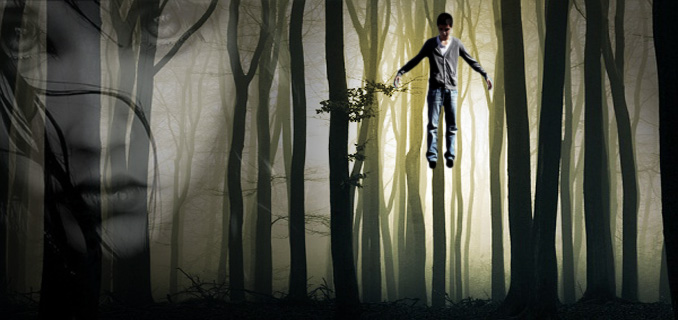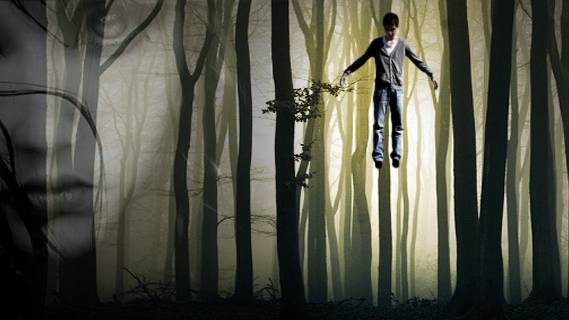Visions of the Impossible: Embrace the Unexplained
Source: chronicle.com

The greatest taboo among serious intellectuals of the century just behind us, in fact, proved to be none of the "transgressions" itemized by postmodern thinkers: It was, rather, the heresy of challenging a materialist worldview.
—Victoria Nelson, The Secret Life of Puppets (2002)
Consider two impossible tales.
Scene 1. Mark Twain was famous for mocking every orthodoxy and convention, including, it turns out, the conventions of space and time. As he relates the events in his diaries, Twain and his brother Henry were working on the riverboat Pennsylvania in June 1858. While they were in port in St. Louis, the writer had a dream:
In the morning, when I awoke I had been dreaming, and the dream was so vivid, so like reality, that it deceived me, and I thought it was real. In the dream I had seen Henry a corpse. He lay in a metallic burial case. He was dressed in a suit of my clothing, and on his breast lay a great bouquet of flowers, mainly white roses, with a red rose in the centre.
Twain awoke, got dressed, and prepared to go view the casket. He was walking to the house where he thought the casket lay before he realized "that there was nothing real about this—it was only a dream."
Alas, it was not. A few weeks later, Henry was badly burned in a boiler explosion and then accidentally killed when some young doctors gave him an overdose of opium for the pain. Normally the dead were buried in a simple pine coffin, but some women had raised $60 to put Henry in a metal one. Twain explains what happened next:
When I came back and entered the dead-room Henry lay in that open case, and he was dressed in a suit of my clothing. He had borrowed it without my knowledge during our last sojourn in St. Louis; and I recognized instantly that my dream of several weeks before was here exactly reproduced, so far as these details went—and I think I missed one detail; but that one was immediately supplied, for just then an elderly lady entered the place with a large bouquet consisting mainly of white roses, and in the center of it was a red rose, and she laid it on his breast.
Who would not be permanently marked, at once inspired and haunted, by such a series of events? Who of us, if this were our dream and our brother, could honestly dismiss it as a series of coincidences? Twain could not. He was obsessed with such moments in his life, of which there were many. In 1878 he described some of them in an essay and even theorized how they worked. But he could not bring himself to publish it, as he feared "the public would treat the thing as a joke whereas I was in earnest." He offered the essay to the North American Review on the condition that it be published anonymously. The magazine refused to do so. Finally, Twain published the article in Harper’s, in two installments: "Mental Telegraphy: A Manuscript With a History" (1891) and "Mental Telegraphy Again" (1895).
Mental telegraphy. The technological metaphor points to Twain’s conviction that such events were connected to the acts of reading and writing. Indeed, he suspected that whatever processes this mental telegraphy involved had some relationship to the sources of his literary powers. The "manuscript with a history" of the first essay’s title refers to a detailed plotline for a story about some Nevada silver mines that one day came blazing into his mind. Twain came to believe that he had received this idea from a friend 3,000 miles away through mental telegraphy.
Scene 2. The American forensic pathologist Janis Amatuzio’s book Beyond Knowing is filled with extraordinary stories of impossible things that routinely happen around death. Here is one such tale.
It began one night when Amatuzio encountered a very troubled hospital chaplain, who asked her if she knew how they had found the body of a young man recently killed in a car accident. Amatuzio replied that her records showed that the Coon Rapids Police Department had recovered the body in a frozen creek bed at 4:45 a.m.
"No," the man replied. "Do you know how they really found him?" The chaplain then explained how he had spoken with the dead man’s wife, who related a vivid dream she’d had that night of her husband standing next to her bed, apologizing and explaining that he had been in a car accident, and that his car was in a ditch where it could not be seen from the road. She awoke immediately, at 4:20, and called the police to tell them that her husband had been in a car accident not far from their home, and that his car was in a ravine that could not be seen from the road. They recovered the body 20 minutes later.
[...]
Debunkers misunderstand such stories as the soon-to-be-dead brother, the appearance of the fatal-car-accident victim, and the advancing fire—all of which happened under extreme circumstances—when they ask, with a sneer, why all psychics do not get rich on the stock market, or why robust psychic phenomena cannot be made to appear in the controlled laboratory.
Putting aside for the moment the fact that psychics sometimes do get rich, and that statistically significant but humble forms of psychic phenomena do in fact appear in laboratories, the answer to why robust events like those of Twain, the widowed wife, and the Stockholm fire do not appear in the lab is simple: There is no trauma, love, or loss there. No one is in danger or dying. Your neighborhood is not on fire. The professional debunker’s insistence, then, that the phenomena play by his rules and appear for all to see in a safe and sterile laboratory is little more than a mark of his own ignorance of the nature of the phenomena in question. To play by those rules is like trying to study the stars at midday. It is like going to the North Pole to study those legendary beasts called zebras. No doubt just anecdotes.
Read the full article at: chronicle.com
Tune into Red Ice Radio:
Rupert Sheldrake - The Science Delusion
Gary Schwartz - Communication With the Deceased, Life After Death & The Soul Phone
Eldon Taylor - Whose Thoughts Are You Thinking?
Peter Smith - Past Life and Life Between Lives Regression
Johan Oldenkamp - Wholly Science
Anthony Peake - Hour 1 - The Nature of Reality & Twilight Zones of Consciousness
Carol de la Herran - Hour 1 - Robert Monroe & Altered States of Consciousness
Richard Alan Miller - Hour 1 - The Non-Local Mind in Holographic Reality
Penney Peirce - Frequency, Intuition, Time & Dreams
Anthony Peake - Hour 1 - Philip K Dick - The Man Who Remembered the Future
Joe Slate - Psychic Vampires, Energy Predators & Energy of the Soul






















